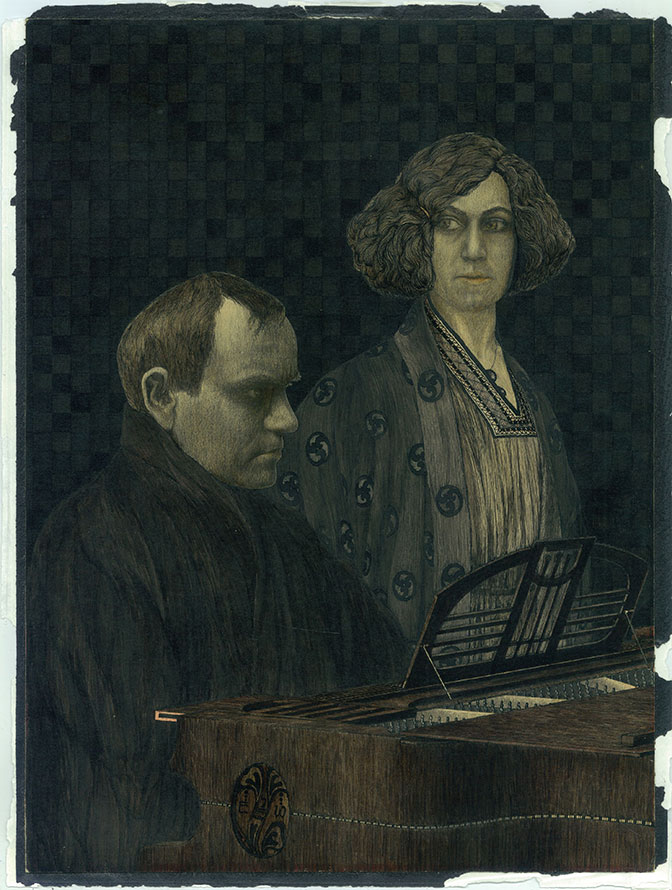Ilna Ewers-Wunderwald (1875-1957) was a true Art Nouveau icon. Before the First World War the myth-loving artist was celebrated by art critics, but then fell into oblivion for more than 100 years. Literature connoisseurs still know her today as the wife of the scandalous writer Hanns Heinz Ewers (1871-1943), whose books she illustrated. From February 28th to June 23rd 2019, an exhibition of the complex artist was shown at the Bröhan Museum in Berlin.
You missed the exhibition? Too bad, but don’t worry: simply visit the exhibition virtually in the EXHIBITION SPECIAL 360° created by ART@Berlin at the end of this article, almost as if you had been there yourself.
Image above: Ilna Ewers-Wunderwald on Capri, about 1903, Heinrich-Heine-Institut Düsseldorf
The visual artist, fashion designer, cabaret artist and translator Ilna Ewers-Wunderwald has had such a complex and intense effect that it is amazing how she could almost completely fall into oblivion. She has been inspired for her works by adventurous world travels to South America, Southeast Asia and above all India. The artist received public admiration and recognition not only for her paintings, but also for her book designs and fashion designs – as well as her appearances as a cabaret artist on the Berlin Art Nouveau stage of the “Überbrettl”.

The autodidact worked especially with Chinese ink and is fantastically ornamental, creating illustrations between blossoms and animal worlds with Japanese-style character. Wunderwald’s artistic speciality was the work with luminous watercolour in combination with pen drawing, she was influenced by Hokusai and Beardsley, but quickly developed her own touch of fantastic Art Nouveau, which she successfully presented in 1909 and 1910 at the Berlin Secession, in 1911 and 1914 at the Great Berlin Art Exhibition or in 1912 at the Munich Secession.

She cultivated relationships with important gallery owners such as Paul Cassirer and attracted the attention of prominent artist colleagues such as Emil Orlik and Hermann Struck. Wunderwald created her motifs from dreamlike play and exotic fantasy.

The safety and fineness of the lines are so impressive that they represent an almost microscopic natural treatment. The artist, whose delicate oeuvre was increasingly forgotten during the First World War, was given a new look at the Bröhan Museum in 2019. The press such as art-Magazin, Weltkunst, Tagesspiegel, Südkurier, BZ or Berliner Morgenpost enthusiastically celebrated this rediscovery.
In the exhibition, which was created in close collaboration with the philosopher, author and Ewers expert Dr. Sven Brömsel, Ewers-Wunderwald’s works with bright pastel colours were shown as well as a recently discovered series of black-and-white pen drawings. These were created after a particularly influential trip to India, which the couple embarked on in 1910. Ilna Ewers-Wunderwald used the “coexistence of beauty and horror” experienced there, as the artist’s travelogue says, in her art.
The exhibition was accompanied by “Alraune des Jugendstils – Ilna Ewers-Wunderwald” with a biographical essay by Dr. Sven Brömsel, published by Zagava Verlag.
EXHIBITION SPECIAL 360°






